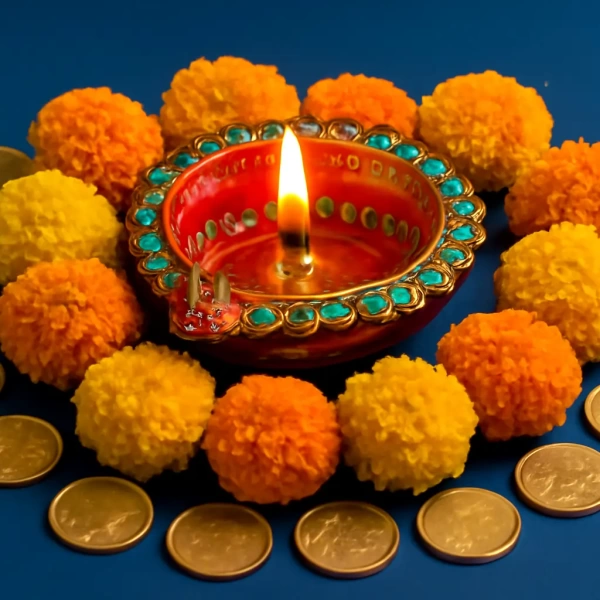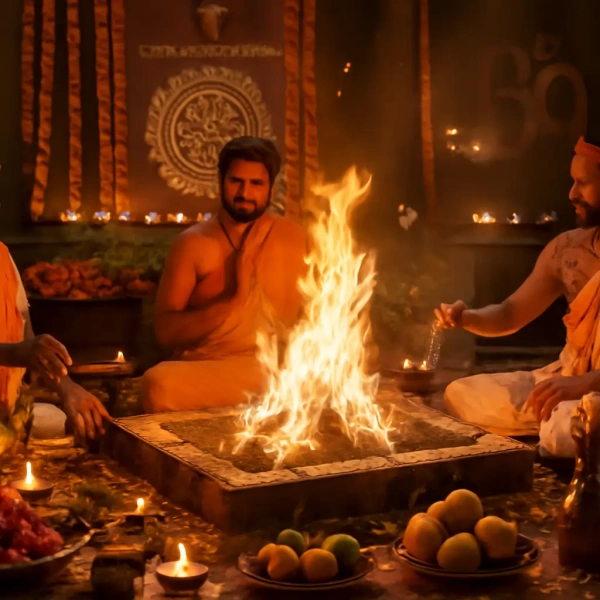In every Indian home, festivals and daily pujas (ritual prayers) are filled with colors, scents, and traditions. But did you know that hidden in these rituals are timeless beauty secrets passed down from our grandmothers? The same ingredients offered to deities—like turmeric, sandalwood, flowers, and oils—are also natural remedies for glowing skin, healthy hair, and inner radiance.
Let’s explore how these ancient puja beauty routines can be adapted into our modern self-care practices.
Why Puja Ingredients Are Beauty Treasures
During pujas, natural items like turmeric, sandalwood paste, ghee, coconut oil, flowers, honey, and rice are commonly used. Our grandmothers knew that these weren’t just symbolic offerings but also had medicinal and beauty benefits.
- They are pure and natural – free from chemicals.
- They have healing properties – antibacterial, cooling, nourishing.
- They bring balance – not just for skin and hair, but also for mind and spirit.
By using these ingredients in beauty care, you’re not only nourishing your body but also honoring tradition.
Skin Glow Rituals Inspired by Puja
1. Turmeric (Haldi) Ubtan
- Used in Puja: As a purifier and auspicious symbol.
- Beauty Benefit: Brightens skin, reduces acne, and fights dullness.
How to use:
Mix turmeric with gram flour (besan), yogurt, and a few drops of rose water. Apply as a face mask for 15 minutes, then wash off gently.
Grandmother’s Tip: Always use a pinch of turmeric—too much can stain skin yellow.
2. Sandalwood (Chandan) Paste
- Used in Puja: For its cooling fragrance, offered to deities.
- Beauty Benefit: Calms acne, reduces blemishes, and soothes skin.
How to use:
Grind sandalwood with rose water or milk. Apply to the face to reduce pimples and bring radiance.
Grandmother’s Tip: Use sandalwood before bedtime for restful sleep.
3. Honey for Softness
- Used in Puja: As “Madhu,” symbolizing sweetness.
- Beauty Benefit: Natural moisturizer and antibacterial.
How to use:
Apply raw honey directly as a mask. Rinse after 10 minutes for soft, supple skin.
Grandmother’s Tip: Mix honey with lemon juice to lighten dark spots.
4. Kumkum & Flowers
- Used in Puja: Red kumkum and fresh flowers symbolize devotion.
- Beauty Benefit: Flowers like roses and marigolds refresh and tone skin.
How to use:
Crush rose petals in milk and apply as a soothing face pack. Use rose water as a natural toner.
Grandmother’s Tip: Keep a bowl of rose water in the fridge and spray on face during summer for instant freshness.
Hair Care Rituals from Puja
1. Coconut Oil (Sacred Offering)
- Used in Puja: Offered as “naivedya” and for lighting diyas.
- Beauty Benefit: Deeply nourishes scalp, prevents dryness, strengthens roots.
How to use:
Warm coconut oil and massage gently into the scalp. Leave overnight and wash with mild shampoo.
Grandmother’s Tip: Add curry leaves while heating coconut oil for darker, stronger hair.
2. Neem Leaves (Used in Ritual Baths)
- Used in Puja: For purification and protection.
- Beauty Benefit: Anti-dandruff, antibacterial, and scalp cleanser.
How to use:
Boil neem leaves in water, let it cool. Rinse hair with this water after shampoo.
Grandmother’s Tip: Grind neem leaves into a paste and apply to the scalp for 20 minutes to cure itchiness.
3. Hibiscus Flowers
- Used in Puja: Offered to Goddess Kali and Ganesha.
- Beauty Benefit: Promotes hair growth and prevents premature greying.
How to use:
Crush hibiscus petals with coconut oil to make a hair mask. Apply to scalp, leave for 30 minutes, then wash.
Grandmother’s Tip: Hibiscus with aloe vera works as a natural conditioner.
Ritual Bath Secrets
- Milk & Honey Bath – Softens and nourishes skin.
- Haldi-Sandalwood Bath Powder – Natural cleanser and tan remover.
- Herbal Smoke (Dhoop) – Purifies air and clears skin congestion.
Benefits of Puja Beauty Rituals
- 100% Natural Care – No chemicals, safe for all ages.
- Holistic Glow – Heals both skin and mind.
- Anti-Aging – Ingredients like sandalwood and turmeric slow aging signs.
- Budget-Friendly – Most items are already at home.
- Cultural Connection – Keeps traditions alive while caring for beauty.
Do’s & Don’ts
✅ Do’s
- Always use fresh, natural ingredients.
- Patch-test before applying anything new to the skin.
- Be consistent—natural remedies take time.
- Store rose water, milk, or herbal pastes in clean containers.
❌ Don’ts
- Don’t overuse turmeric—it may stain skin.
- Don’t apply lemon juice directly without mixing—it can irritate skin.
- Don’t leave oils in hair for more than 24 hours—it may attract dust.
- Don’t use chemical soaps after natural buttersthey cancel out the benefits
FAQs
1. Can I use these remedies daily?
Yes, most remedies like rose water, coconut oil, and honey can be used daily. Masks with turmeric or sandalwood should be used 2–3 times a week.
2. Are these safe for sensitive skin?
Yes, but always do a patch test. Sensitive skin may react to lemon or neem, so mix them with soothing bases like yogurt or aloe vera.
3. How long will it take to see results?
Natural remedies take 2–4 weeks of regular use to show visible results. Unlike chemical products, they work gently and improve long-term health.
4. Can men also follow these rituals?
Absolutely! These are not gender-specific. Turmeric masks, coconut oil massages, and neem rinses are beneficial for everyone.
5. Can I mix modern skincare with these rituals?
Yes! You can use your sunscreen or moisturizer along with these remedies. Just avoid layering too many things at once.
Final Thoughts
The beauty rituals hidden in puja traditions are more than skincare—they are about balance, self-love, and connecting to nature. Our grandmothers always knew: beauty is not just outer glow, but inner peace and wellness.
By adopting these ancient puja beauty secrets, you not only care for your skin and hair naturally but also carry forward a piece of timeless wisdom.
✨ True glow is a mix of outer care and inner calm.

